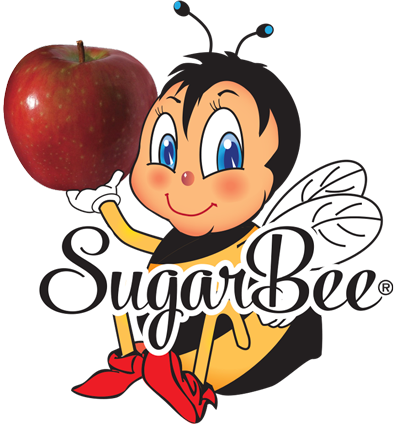Grower Spotlight: Interview with Harold Schell
This month we are talking with SugarBee® grower Harold Schell.
SugarBee®: Hello Harold, thank you for your time today to talk to us. What is it that you do?
Harold Schell: I manage the test orchard where we have several new varieties that we are testing, and we are harvesting some of those new varieties today. I am actually in-between our orchards now, checking on the harvest.
SB: What do you look for when testing varieties?
HS: First of all I look for color development on the fruit, then I check for firmness. I also look at starch conversion, which is basically converted starches to sugars, so I do a starch iodine test. For multi-colored fruit varieties I look at background color of the fruit, which is how much chlorophyll is still left in the fruit. I look at what percentage of the seeds have darkened because when the apple is matured the seeds darken complete to dark brown. Then I put all those things together as an analysis to help us determine when we are going to harvest the fruit.
SB: Does the length of storage play a factor in harvest time?
HS: Yes, if the fruit is going to be stored for a length of time, then you want to harvest it on the early side. But if it is a variety that goes on the market right away we will want to hang it on the tree a little longer to get the full flavor potential out of it.
SB: How long does it take to fully test a variety and get it ready for production?
HS: Well, our signature variety is SugarBee® and it took seven years to get it where it is today.
We are still fine-tuning the SugarBee® variety; when to harvest it, how it stores and the best way to manage it once it is harvested. We produced 550 bin last year and we are looking at 1200 bins of SugarBee® this year so they are on their way.
SB: How many more varieties are you testing this year?
HS: In addition to SugarBee®, we currently have 4 main varieties that are in 1 to 2 acre plots, we have to have a fair amount of fruit to get the volume we need to play around with the storage methods. Then we have about 6 more varieties in smaller quantities that are in the infancy stages still.
SB: What is your favorite part of this job?
HS: I would have to say working with something new all the time. Its exciting to look at new varieties and what potential they may have and what they can do for growers.
SB: Well, Harold, thank you for sharing all of your knowledge with us. As a parting thought, what is your outlook on the future of the industry?
HS: I think there will continue to be push towards new varieties of fruit. In my opinion, the people that buy fruit today are looking for varieties with different eating experiences than we looked for in my generation.
SB: Great news! Good luck with harvest.
HS: Thank you!

